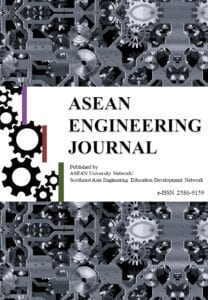ENERGY-EFFICIENT POWER ALLOCATION FOR IMPERFECT CSI DOWNLINK NOMA SYSTEM
DOI:
https://doi.org/10.11113/aej.v11.16686Keywords:
Downlink cellular system, Energy efficiency, Imperfect channel state information, Outage probabilityAbstract
The fifth generation (5G) networks must provide the massively increased number of users by thousand times higher data rate at lower power consumption. Thus, optimizing the energy efficiency (EE) becomes an essential issue that has to be researched from the green communication perspective. Non-orthogonal multiple access (NOMA) is considered one of the high potential techniques in fifth-generation systems. This technology is favorable to maximize the energy efficiency and the spectrum efficiency by composing different signals at the same time on the same carrier at different power levels. In this paper, a low complexity power allocation algorithm is proposed in imperfect channel state information (CSI) downlink NOMA cellular system, where obtaining full CSI at the base station is considered a challenge. The proposed algorithm relies on the fact that the allocated power is inversely proportional to the channel strength of the user to implement the successive interference cancellation (SIC) technique at the user terminal to reconstruct the desired signal. The performance of the system is analyzed in terms of energy efficiency and outage probability and compared to the conventional orthogonal multiple access (OMA) system. Results show that the proposed algorithm increases the energy efficiency by about 50% compared to the conventional OMA technology, and an improvement in the outage probability has been achieved. Furthermore, the effect of the error in the channel estimation on the energy efficiency in imperfect CSI NOMA system is evaluated. The simulation shows that the energy efficiency reduces when the channel estimation error increases; and the best performance is achieved in the perfect CSI case where the channel estimation error is zero.
















